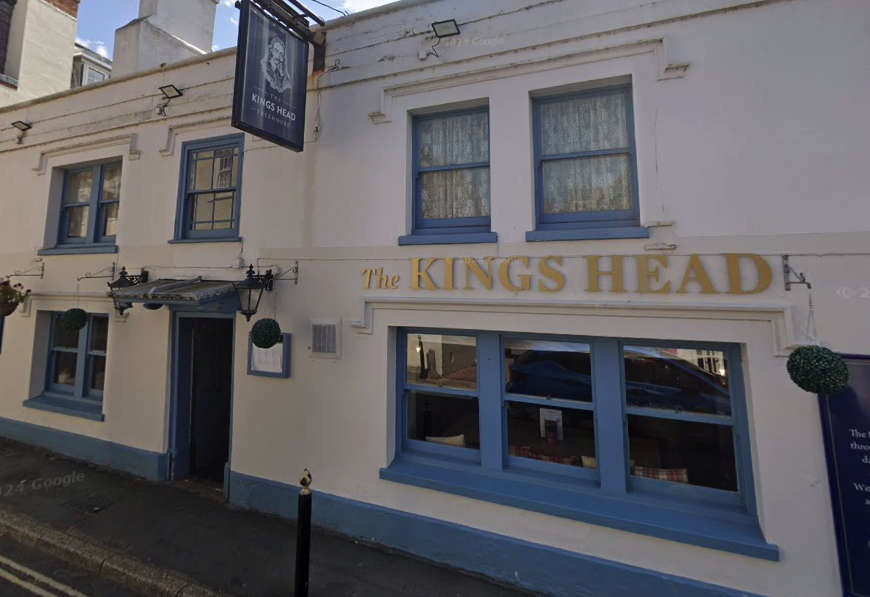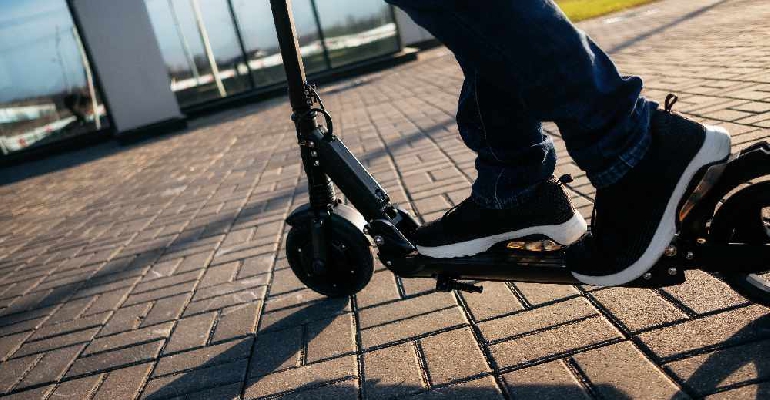
The Isle of Wight's Compton Bay has been named one of the ten most beautiful stargazing spots in the UK.
Land Rover has consulted astronomer Dr Jenifer Milard to reveal the best locations, giving tips on what you can see when you get there.
She said:
"Compton Bay will allow you to spot as many as three great constellations - Orion, The Plough — otherwise named the Big Dipper in US and Canada — and Cassiopeia.
"The location draws stargazers all year round as it is largely devoid of light pollution, allowing visitors to spot all sorts of stars in the sky — even with the naked eye.
“Nearby Fort Victoria Country Park Car Park is a Dark Sky Discovery Site, noted for its accessibility and excellent skies largely devoid of light pollution”
Top ten in full

1. Carrick-a-Rede Rope Bridge (Northern Ireland)
2. Compton Bay (Isle of Wight)
3. Tomintoul and Glenlivet, Cairngorms National Park (Scotland)
4. Llynnau Cregennen, Snowdonia National Park (North Wales)
5. Dalby Forest, North York Moors National Park (North Yorkshire)
6. Usk Reservoir, Brecon Beacons National Park (Wales)
7. Porlock Common, Exmoor National Park (Somerset)
8. Kielder Observatory and forest (Northumberland)
9. Kelling Health Holiday Park (Norfolk)
10. Ben Damph Estate on Upper Loch Torridon (Scotland)
Five tips for stargazing

Convinced that you want to give stargazing a go? Land Rover asked expert Dr Jenifer Milard for her top tips for stargazing novices.
- Wrap up warm – astronomy is a static hobby so it’s very easy to get cold. Hot drinks are a must too.
- Use a red-light torch - Exposure to white light, from any source, even your phone screen, will ruin your dark adaption. A red-light torch or red-light filter on your phone screen will preserve your dark adaption.
- Moonless nights are best – moonlight makes the whole night sky brighter, making it harder to see faint objects.
- Averted vision – by looking slightly to one side of your target object, you activate the more light-sensitive cells in your eyes, allowing you to see faint objects like nebulae and galaxies more easily.
- Star maps, apps, and a compass – these will help you plan your observing session and navigate the night sky, so you can find the objects you wish to view.
Dr Milard comments:
“It’s worth stargazing all year round because our view of the cosmos slowly changes night-by-night. As earth moves around the sun on its orbit, we look out onto different parts of the universe.
"Moonless nights are ideal - the moon’s light simply washes out fainter stars and objects, like nebulae and galaxies, although it has little effect on bright stars and planets.”

 Mountbatten Inviting Islanders To Sign Up For 2026 Lapland Husky Trail
Mountbatten Inviting Islanders To Sign Up For 2026 Lapland Husky Trail
 Salvation Army Receives Festive Boost Thanks To December Donation From Southern Vectis
Salvation Army Receives Festive Boost Thanks To December Donation From Southern Vectis
 Isle Of Wight Council Supporting ‘Hoodies For Homeless’ Campaign
Isle Of Wight Council Supporting ‘Hoodies For Homeless’ Campaign
 Man In 20s 'Under Investigation' Following Drink-Drive Arrest
Man In 20s 'Under Investigation' Following Drink-Drive Arrest
 Big Give 2024 Sees Huge Donation For Isle Of Wight Charity
Big Give 2024 Sees Huge Donation For Isle Of Wight Charity
 Growing Resistance Over 14 Home Development Plans For Northwood
Growing Resistance Over 14 Home Development Plans For Northwood
 Parish Council Objects To Waste Recycling Plant At Knighton
Parish Council Objects To Waste Recycling Plant At Knighton
 Highways Improvement Work Continues In The New Year
Highways Improvement Work Continues In The New Year
 Yarmouth's Kings Head To Feature Bed And Breakfast Accommodation
Yarmouth's Kings Head To Feature Bed And Breakfast Accommodation
 New Low Cost Flats Could Come To Ryde - If Plans Get Approved
New Low Cost Flats Could Come To Ryde - If Plans Get Approved
 Casualty Airlifted To Hospital Following Serious Overnight Crash Near Porchfield
Casualty Airlifted To Hospital Following Serious Overnight Crash Near Porchfield
 Engine Problems Lead To Yarmouth RNLI Callout To Osborne Bay
Engine Problems Lead To Yarmouth RNLI Callout To Osborne Bay
 Ryde Academy Students Donate To Two Worthy Causes At Christmas
Ryde Academy Students Donate To Two Worthy Causes At Christmas
 Road Improvement Works To Get Underway From The Very Start Of The New Year
Road Improvement Works To Get Underway From The Very Start Of The New Year
 Isle of Wight Youth Trust Benefits From Big Give Support
Isle of Wight Youth Trust Benefits From Big Give Support
 Council Chair 'Furious' Over Floating Bridge Replacement Fiasco
Council Chair 'Furious' Over Floating Bridge Replacement Fiasco
 Fire Service Travel To Island Contributes To Huge Budget Overspend
Fire Service Travel To Island Contributes To Huge Budget Overspend
 Department Approaching Completion In Ryde As Opening Date Announced
Department Approaching Completion In Ryde As Opening Date Announced
 Guidance Issued Over Sharps Disposal As Waste Teams At Risk
Guidance Issued Over Sharps Disposal As Waste Teams At Risk
 Police Warnings Over E-Scooters Ahead Of Christmas Day
Police Warnings Over E-Scooters Ahead Of Christmas Day


